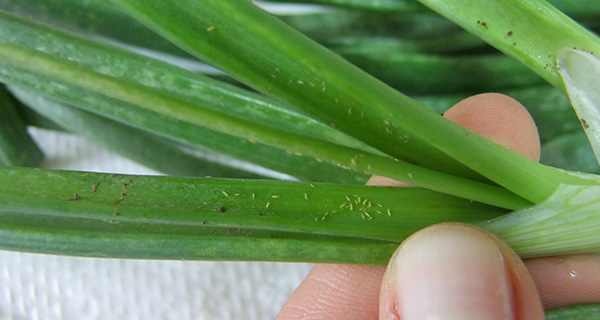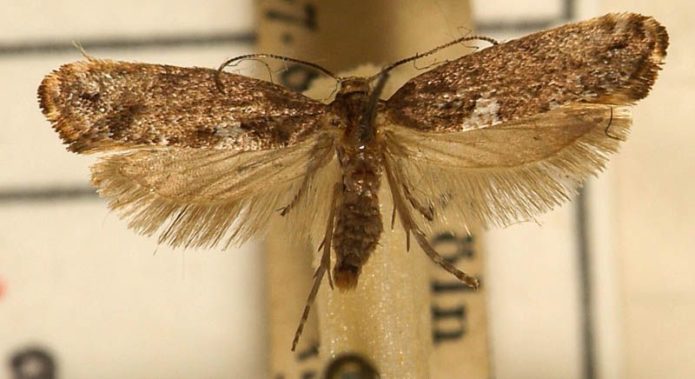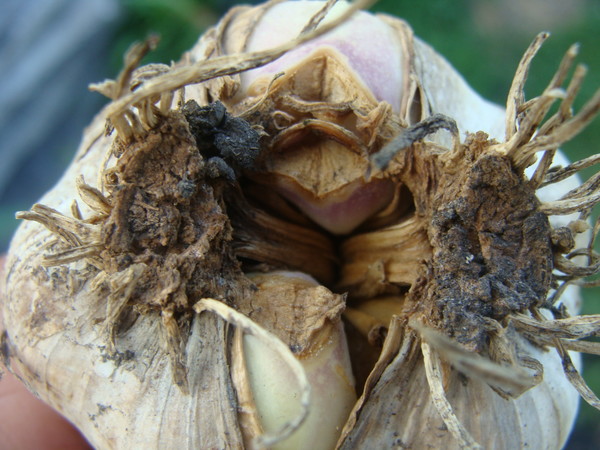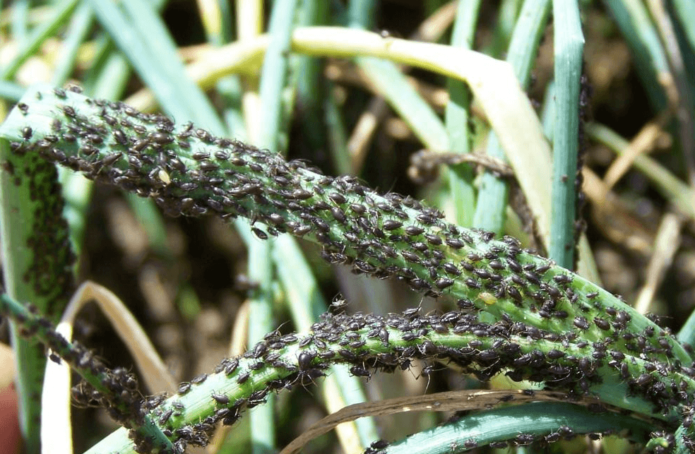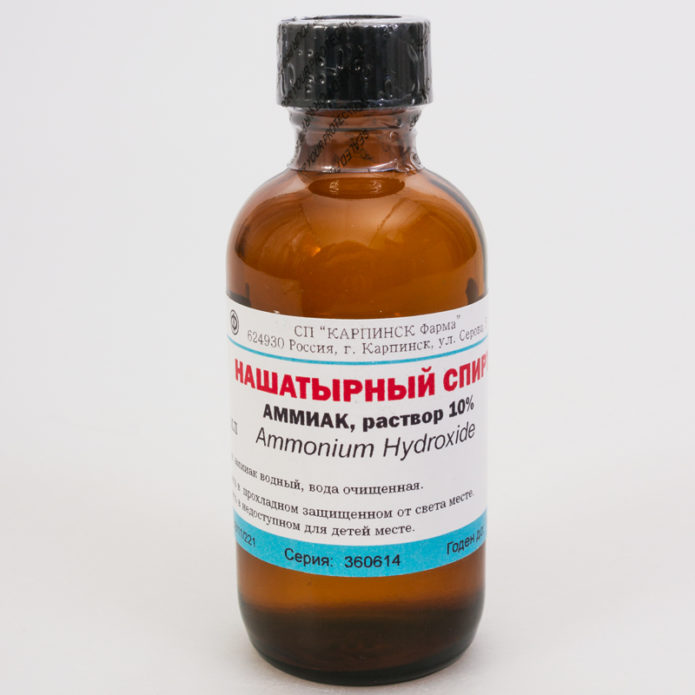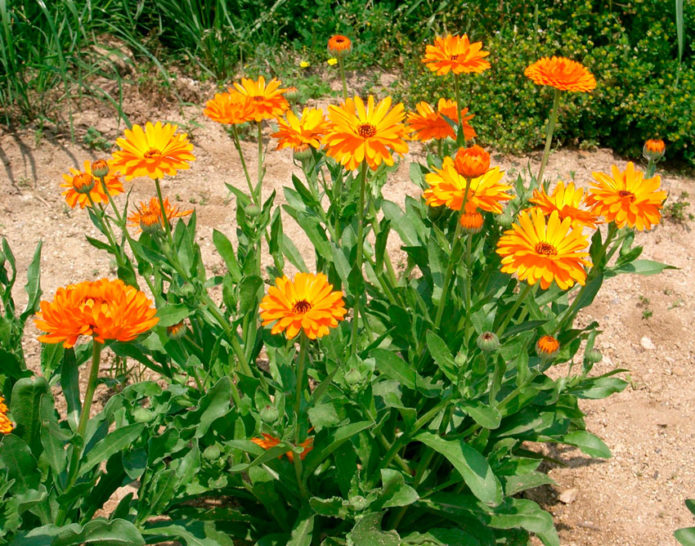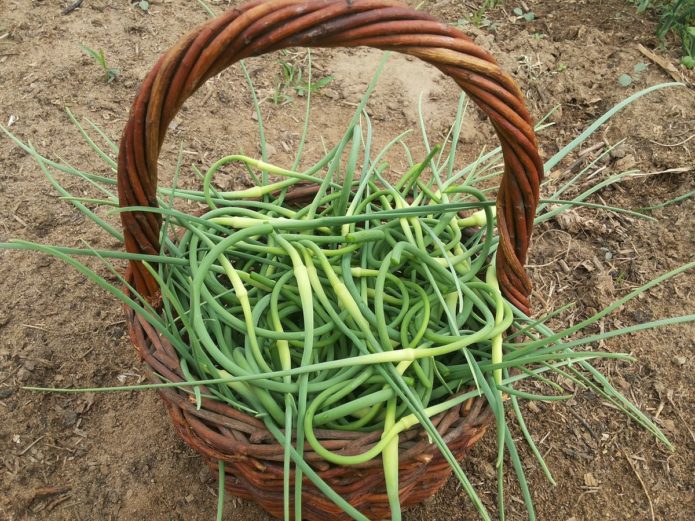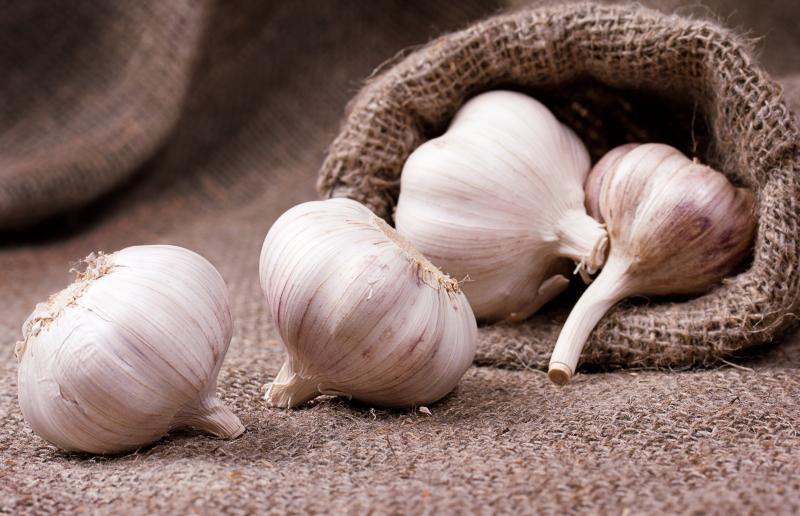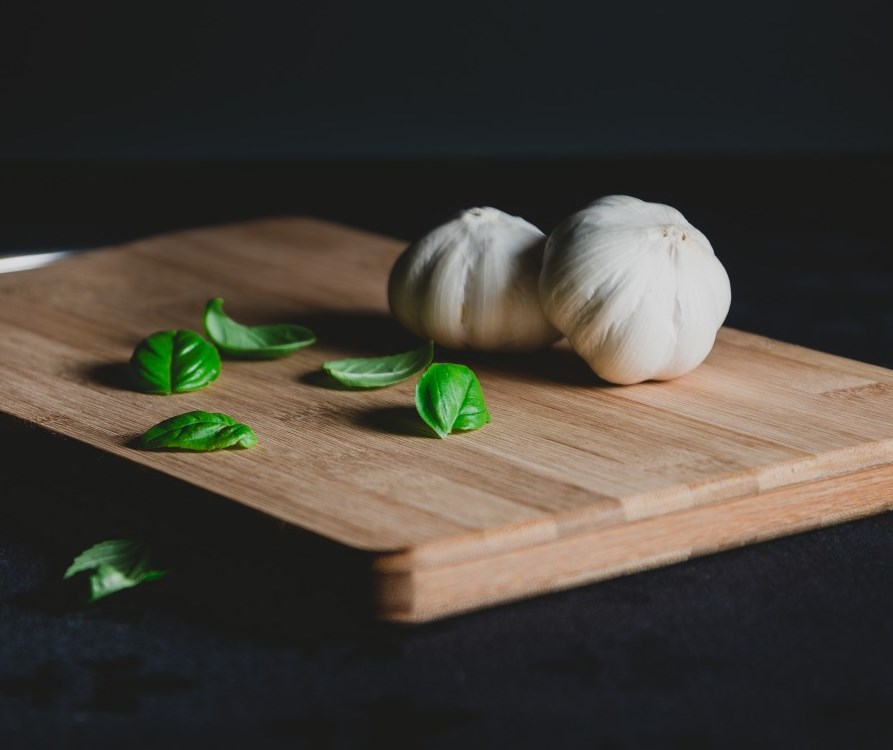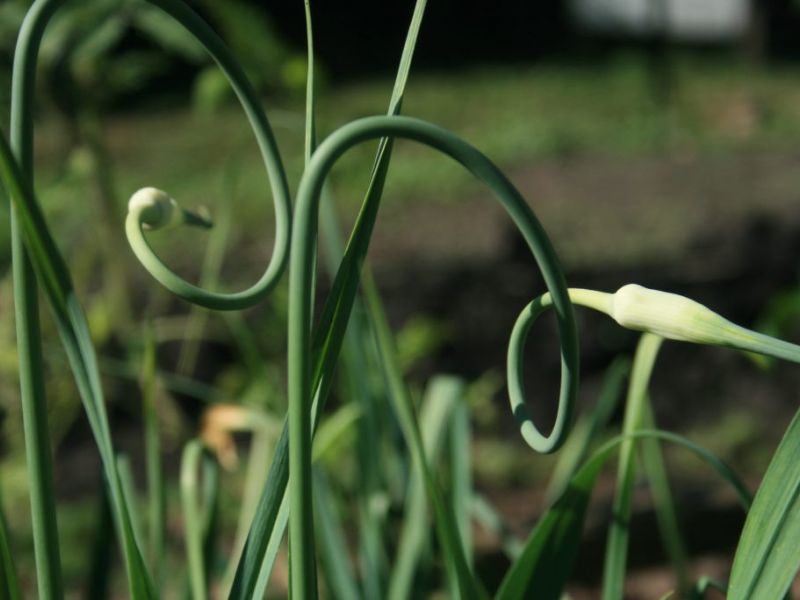It may seem paradoxical, but garlic, which is widely used in the fight against diseases and pests of various vegetable and fruit plants, is itself often attacked by pests. These are insects and mites; they spoil both the feathers of garlic and the heads. Basically, the pests of garlic are the same as those of onions, there are more than a hundred of them. About a dozen of them are much more common than others and cause particular harm to the plant.
Content
Garlic pests
Garlic pests are dangerous in that they gnaw leaves or cloves, depriving us of the harvest, often lead to the death of plants, but that's not all. Many pests also carry pathogens of various diseases, which significantly complicates the care of plants: the fight against diseases often requires the use of chemicals, which is extremely undesirable in personal gardens.
Tobacco thrips
Thrips is the smallest insect of brown or yellowish color, not every gardener can see it: the size of thrips is no more than a millimeter. Females lay eggs in garlic leaves (and not only garlic, because thrips is tobacco), and larvae very soon appear from eggs, which suck juices from soft tissues: both from plant leaves and from their inflorescences. Damaged garlic weakens, growth slows down and stops, and in severe cases, the plant may die.
By carefully examining the leaves of garlic, you can easily detect the pest, especially with a massive distribution. But you shouldn't wait for it. If it is customary in the garden to correctly alternate the plants in the beds, systematically destroy the weeds, and disinfect the chives before planting (10 minutes hot, about 45 aboutC, water), the appearance of thrips is almost excluded... Sowing nearby carrots, which repels the pest, also helps.
If small amounts of thrips are found, garlic can be sprayed with celandine infusion (a bucket of herbs is poured with boiling water and insisted for two days). The use of insecticides (Vermitic, Actellik, etc.) is justified only with a massive spread of the pest.
Onion fly
The onion fly looks like a common indoor fly and has a size of about 1 cm. In mid-May, during cherry blossoms, it lays eggs in the leaf axils near the ground, or even directly on the ground. After about a week, white larvae appear, which after another week move from leaves to garlic cloves and gnaw them both outside and inside. After that, no heads remain. During the summer, the fly lays eggs 2-3 times.
Thrips scaring techniques also help against flies. She is also afraid of various folk remedies. So, if you periodically dust the garden with a mixture of tobacco, ash and pepper, a fly will not land on it. After the mixture has settled, it is lightly embedded in the soil with a hoe.In early June, you can water the garden with a salt solution (200 g per bucket of water), without getting on the leaves. If larvae are found, chemical insecticides must be used (Iskra, Inta-Vir, etc.).
Onion moth
The onion moth is a nocturnal butterfly. Its wingspan reaches 1.5 cm, its color is gray-brown. At the very beginning of summer, she lays eggs in the leaf axils. Caterpillars of yellowish-green color soon hatch from eggs. It is easy to notice the traces of their feasting: these are light stripes or various spots on the garlic leaves. The leaves lose their elasticity, then die off, which leads to the cessation of growth, and often to the death of the plant. In the fight against onion moth, the same measures are effective as in the case of onion fly.
Nematodes
Nematodes are tiny white worms that feed on plant juices. Many types of nematodes are known; these are very dangerous pests of most crops. Even on garlic, there are three: stem, root and gall, especially the first two.
The root nematode lives in the soil, therefore it is found only after it has done things, gnawed out many heads, and you have to say goodbye to the harvest. Gall nematode damages the roots by forming bulges on them. The easiest way to detect a stem nematode: from its effect on the leaves, longitudinal yellowish stripes and brownish spots appear, the leaves change shape.
Stem nematode no more than 1.5 mm long, feeds on sap from leaves. As a result, the leaves dry up, the head stops developing and begins to rot. Nematodes are extremely tenacious and even in the absence of food can spend several years in dry ground. When conditions change, that is, when food appears, nematodes, as it were, wake up and return to active life.
They feel best in clay soils, which need to be corrected by adding river sand and peat.
If a pest is detected, measures must be taken immediately. Garlic can be saved only with a small number of nematodes. Decoctions of tobacco or calendula roots are used to treat both the soil and the feathers of garlic. But if there are a lot of nematodes, it is useless to use chemical means: the crop was lost... Garlic has not been planted on this bed for 4–5 years, and in general it is not worth planting anything for a couple of years, and after harvesting the garlic, the soil is watered with formalin solution. Dilute it with water in a ratio of 1:25 and pour half a bucket for each square meter.
Preventive measures are processing the cloves before planting with a pink solution of potassium permanganate (up to a day) and watering the beds with a solution of sodium chloride (50 g per bucket of water).
Garlic four-legged mite
The four-legged tick often manifests itself only during storage of the crop. Its size is only 0.2 mm, 4 legs are visible at magnification, coloration is almost absent. The results of the harmful action of a tick are depressed spots on the teeth. In summer, females lay eggs on leaves, and soon young mites begin their activity.
Careful examination of the cloves before planting can help detect the tick, and disinfection can prevent its appearance. In summer, the action of a tick externally can manifest itself in the curvature of foliage. Only acaricides (Actoverm or Aktofit) are effective against ticks, with which both the soil and plants are treated.
Root mite
The root mite is slightly larger than the four-legged one, almost transparent, and lives in the soil. It is taken into the head of garlic through the bottom, after which it gnaws the cloves to the state of dust. High temperatures and humidity are favorable for the tick. Prevention and control measures are the same as in the case of its four-legged brother.... In addition, many gardeners treat plantings with colloidal sulfur preparations 3 weeks before harvesting.
Aphid
Aphids are probably the most famous pest in the garden and garden, there are many types of aphids, but their appearance is the same (the color is different), the measures against them are the same.Aphids prefers young leaves, from which it is easy to suck out juices, but, having finished with them, migrates to older ones, forming colonies. Over the summer, more than one generation of aphids hatch, you have to fight it constantly.
Mint planted in a neighboring garden, or even leaves scattered around the garlic, helps to drive away aphids from planting.
Leaves damaged by aphids are deformed, becoming defenseless against diseases that this pest often carries. Against aphids, while there is little of it, various folk remedies are effective. These are, for example, tobacco dust, ash, mustard powder, etc. However, with rapid reproduction of aphids, it is better to use insecticides (Iskra, Inta-Vir), especially on young plants, long before harvesting..
Weevil
Weevil - a beetle with a proboscis - has a length of up to 3 mm, flies out of the soil in early spring. The females lay eggs inside the clusters of leaves, and the larvae that appear will gnaw them out. Traces of their work - whitish stripes, then - yellowing of the leaves. In case of dry weather, the leaves dry out. There is no specific prophylaxis: correct agricultural techniques (loosening, weed control, lack of thickening in plantings) reduce the likelihood of damage. Drives away the weevil by sprinkling the beds with pepper, mustard or ash.
General pest control measures
In considering each pest, specific control measures were briefly mentioned. At the same time, there are many more or less universal recipes, and most of them are based on the use of improvised means, these are the so-called folk methods. So, a solution of salt (a glass on a bucket of water) is poured over garlic in the spring to scare away pests living in the ground... Many other drugs are also used. The following compositions are practically harmless to humans.
- Wood ash can be used both dry, sifted, and in the form of infusions or decoctions. Plants and the soil between them are powdered with dry ash. This should be done after rain so that the ash sticks to the leaves. Infusions or decoctions (300 g of ash and a little of any soap) are sprayed with garlic.
- Tobacco dust is used in a similar way, but when preparing an infusion or decoction, it is taken slightly less: no more than 50 g per bucket.
- Mustard powder. Also used both dry and in the form of infusions, decoctions or suspensions (about 20 g per bucket of water). If garlic is sprayed with liquid formulations, then dry mustard is only poured into the furrows or around the plants.
- Spicy pepper. A mixture of ground pepper with ash and tobacco dust is one of the universal compounds that drive away pests. But infusions (decoctions) of pepper are also used for spraying. So, the broth is prepared from 100 g of dry pods, boiling them in 1 liter of water, and then diluted to 10 liters.
- Tansy: 3 kg of fresh flowers or 300 g of dried flowers are boiled in water, diluted to 10 liters, filtered. Good against aphids.
- Yarrow: 500 g of dry crushed shoots are insisted in boiling water, then diluted to 10 liters, filtered.
- Nettle: 1 kg of herbs is poured into a bucket of warm water and left to ferment. After 4 days, filter, dilute strongly with water (10–20 times) and use for spraying.
Other herbs are used in a similar way: dandelion, chamomile, potato and tomato tops, etc. Of those drugs that are always at hand, an ammonia solution (ammonia) has a certain effect against pests.
By the way, it is also an excellent nitrogen fertilizer. So, to combat aphids, 50 ml of ammonia and 50 g of any soap are taken in a bucket of water. A solution of half the concentration is used against the weevil. The same solution can drive away the onion fly during the period when it is looking for where to sit and lay eggs.
The use of chemicals on garlic is often justified. The risk of harming yourself is minimal: after all, the heads of garlic will not be dug out soon, but will be eaten throughout the winter. But before buying an insecticide or acaricide, you must carefully study the instructions in order to know how many days after treatment you can approach the plants, and even more so use them for food.
As a rule, garlic leaves are eaten only at the very beginning of spring, then they quickly coarse. Many gardeners, breaking out arrows, do not throw them away, but use them to prepare various dishes. This should also be taken into account when choosing the processing time. And, of course, when spraying with ash or grass solutions, there is no need to use a respirator and protective clothing, and most chemicals belong to the 2nd and 3rd hazard classes, the use of personal protective equipment is mandatory.
Pest prevention
It is said that it is easier to prevent a disease than to cure it. This fully applies to pests. Prevention is very effective and simple: you do not need to do almost anything extra, you just need to properly care for the garlic. In addition, a thorough examination of the teeth before planting and etching them with at least potassium permanganate is of great importance (it is hardly worth recommending formalin, although some lovers use it).
The main preventive measures are as follows.
- Applying the correct crop rotation. Garlic in its original place can be planted the next time only in four years, and over these years, it is necessary to plant carrots at least 1-2 times in the garden.
- Thorough destruction of all plant residues immediately after harvesting the garlic. Mandatory digging of the soil. It is advisable to water it with a 0.1% solution of copper sulfate, and if there were pests living in the ground, then also with a 2% formalin solution.
- Systematic weeding.
- Timely feeding: Plants must be strong to withstand pest attacks.
- Removing garlic that has grown in disarray in various parts of the garden (after all, the seeds are often carried by the wind and birds). It is on random plants that are not being cared for pests can first settle.
Crops of various plants scare off pests well, and not only the main orderly - carrots. It is advisable to plant calendula, marigolds, coriander, mint and other plants with a strong smell next to the garlic.
How to use garlic against diseases and pests
Garlic, having numerous pests, is itself an excellent orderly of the garden and vegetable garden, also because it releases phytoncides in abundance, disinfecting the air. Garlic is used to protect many crops: for this, it is planted in neighboring beds, and plants are sprayed with infusions of garlic leaves or arrows, or even cloves. There is no fundamental difference in which part of the plant to take, only the technology for preparing the infusion can differ.
One way to make a potion is as follows. The cloves of garlic are finely chopped and covered with any vegetable oil. After 1-2 days, 3-4 teaspoons of this product are poured with a liter of water, 2-3 g of laundry soap are added, mixed and filtered. Various plants are sprayed against many fungal diseases (scab, rust, various spots) and pests.
According to the second method, oil is not used, and the garlic (and chives, and leaves, and arrows) passed through a meat grinder is poured with water (1: 1) and left for a week. For processing plants, take about 50 ml of infusion per 10 liters of water, adding a spoonful of washing powder. Also used on all plants. Garlic infusion works well, it is only washed off by rains, so the treatment has to be repeated.
Since diluted garlic is harmless to plants, it can be used almost at any time, except for flowering: the smell can scare away flying insects and interfere with pollination. However, exceeding the concentration can severely damage plants by burning the leaves.Well, you need to understand that garlic infusion is effective only at the very beginning of the disease or with a small number of pests. Spraying is carried out in calm weather, in the morning or in the evening.
Infusions of any parts of garlic help both in the prevention of infection with diseases, and against many pests. If we are talking about those that live in the soil, they water the soil around the plants with infusion, if about leaf-eating ones, they use spraying, and for universal purposes they plant garlic nearby. Garlic is especially effective in protecting crops such as tomatoes, cabbage, cucumbers, and fruit trees. At the same time, there is an opinion that houseplants should not be sprayed with garlic infusion. However, many amateur gardeners use garlic on indoor flowers from aphids, thrips, scale insects, etc., spraying both the leaves and the soil.
For those who doubt the possibility of using garlic infusion for indoor flowers, we recommend planting garlic in separate pots located on the windowsill next to it. In the garden, they try to plant several garlic plants next to currants and gooseberries, this helps to ward off ticks. Garlic wards off even field mice. And in the theory of crop rotation, it is one of the best predecessors for most crops.
Video: cooking garlic infusion
Reviews
Somewhere in early June, I sprinkled just a little bit of urea, and that's it. It is probably necessary to pour it with salt, they wrote about this somewhere, I will try to do it.
Garlic has a lot of pests: root mite, onion lurker, onion moth, onion fly, onion fly - hoverfly, scoops, thrips, etc.
Every year I plant the garlic I had left by May in a garden with strawberries. Firstly, what is good to disappear, they themselves raised, and secondly, the benefits of strawberries - scares away pests.
We water garlic with salt (150-200 g table salt per 10 liters of water) 2-3 times per season, starting in spring. First, the bed is watered with clean water, then salty, and then clean again. It is very convenient to do this in a light rain - walked with salt water, and that's it.
To exclude the damage of garlic by pests and diseases, do not place it after onions and garlic earlier than 3-4 years.
Garlic can be attacked by numerous pests, but this is mainly due to improper plant care. At the same time, garlic-based preparations protect most garden and vegetable garden plants, adding immunity to them.
